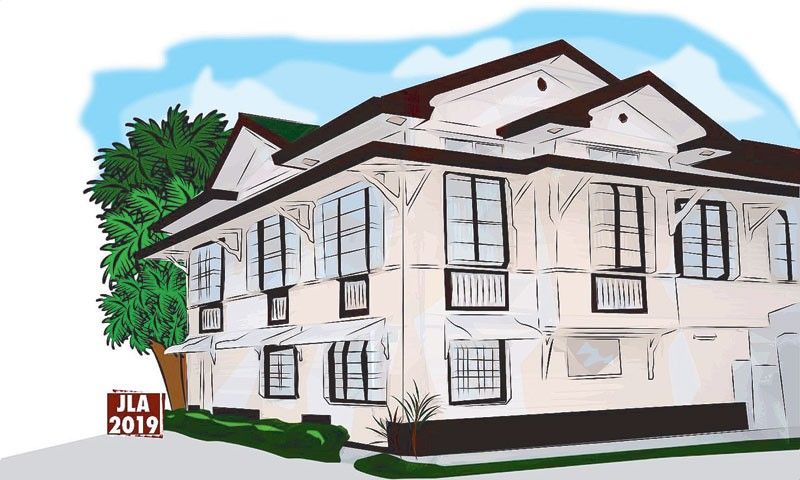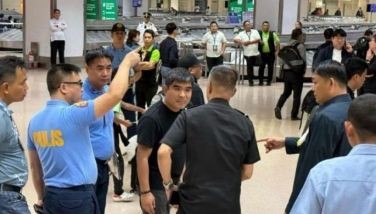Bongabong

During a recent reunion with high school classmates at the Manila Polo Club, a classmate ordered halo-halo — a mountain of crushed ice topped by leche flan, sweets and laced with fresh milk. I drooled as I saw her savoring it as the breeze from the nearby field swept through the cogon hut where we were dining. Actually, it wasn’t just each sweet, crunchy (yes, because of the crushed ice) morsel of the shake-like mixture that I was drooling about.
It was the memories that came flooding with it, like the milk that found its way from the top of the mixture to the base of the tall halo-halo glass, that made me drool.
Ah, my memory bank started spilling over thoughts of summers past. The best halo-halo in my mind is still that of Offie, whose restaurant was a stone’s throw away from my late grandparents’ Igmedio and Jovita Reyes’ house in Bongabong, Oriental Mindoro, about 292 kilometers away from Manila. Mindoro is an island separated from Batangas by the Verde passage, which has one of the richest marine life on earth.
Every summer in the early ‘70s, my parents Frank and Sonia Mayor would “deposit” my sister Mae and me with our grandparents, whom we lovingly called Tatay and Nanay, in Bongabong. Later on, our younger sisters Geraldine and Valerie would also spend their summers there.
I remember at around 3 or 4 p.m., during the height of summer in Bongabong, we would walk down the road to Offie’s with our own glasses from Nanay’s cupboard and line up for halo-halo. A staple in Offie’s halo-halo would be sweetened langka and saba banana, pinipig and leche flan. Ice cream was rare, as freezers were few and far between in those days when electricity in the once sleepy town was intermittent. Then toasted pinipig would be sprinkled over the halo-halo before evaporated milk from a can was poured generously into the ice mountain in our glass. Somehow, our glass, which we handled like it were the Holy Grail, would make it back home with the mountain of crushed ice still standing, and in Nanay’s terrace, we would dig into our grails with gusto as the breeze from the river across the backyard would cool us down some more.
Bongabong, which I haven’t visited in over two decades and which, I read, is a first-class municipality now, didn’t always have electricity then. But we had the breeze from the river and huge anahaw fans. And Offie’s halo-halo.
* * *
When the afternoon sun’s rays had calmed down, Tatay would take us on a longer walk to Aplaya, the closest beach we could reach on foot. We learned to dodge the Aroma plants that had thorns the size of copper nails, which lined the sandy road to the beach. Sometimes, we would pass the old campo santo on the woods to the left of the beach, with its abandoned graves nestling on the wild plants.
Then we would get to a wide clearing on the shore. Though it did not have white sands, the beach during those days was clean, like a gray carpet unfolding into the blue sea. My youngest sister Valerie recalls that once we started playing in the waters, Tatay would string our rubber slippers together on a stick so we wouldn’t lose them. I loved collecting seashells and chasing crabs on the shore.
On the way home, we would pass by a lighthouse, which always fascinated me with its unique shape, in a place called Parola. Once, on one of our return trips from Aplaya, I ended up being chased by an askal. I started walking fast, thinking the dog would leave me alone. But the dog persisted and I made the mistake of running, and the dog gave chase. I ran as fast as my fat legs could take me but the dog was closing in. Suddenly, a gate in one of the picket fences on the sandy road opened wide and someone yelled, “Neneng, parini! (Little girl, come in here!)” and I rushed into the house like it were the Promised Land. The woman who saved me from the jaws of the dog then locked her door as the dog continued barking outside.
Moments later, when the dog was led away by its owner, I emerged from the house and to a crowd almost like the one that waited for Julia Roberts outside Hugh Grant’s nondescript apartment in Notting Hill. I was the talk of the town!
Unfortunately, I don’t remember the name or face of the lady who let me into her home at a most frightful moment in my life.
But I never forgot that moment, and the lesson that bit into me that day: one open door can save a life. When you see someone in dire straits, pull him or her through that door.
* * *
Usually, the lights would come at 6 p.m. That was a signal to take our grandparents’ hand and put it on our forehead. We called it “Amen” though we would say, “Mano po, Tatay, Nanay.” They would answer, “Kaawaan ka ng Diyos.”
When there would be no lights, the house help would light up gaseras that we called “Aladdin.” Dinners would be early, followed by dessert and late night snacks on the second floor family room, which had capiz windows that you could open wide and ventanillas beneath them.
Most of us would be in bed before 8 p.m. Breakfasts would be early and hearty because Tatay was a breakfast person. Nanay woke up early when she had her bakery and her general stores to tend to. By 6 a.m., she would have gone to the poultry in the backyard to fetch some freshly laid eggs. Soon, fishermen would be knocking on her door to sell the day’s catch, which we would have for lunch.
Then Tatay would go to the hulo in the farm. He was one of the first to install an irrigation system in the farmlands of Bongabong.
Left at home, I would devour Tatay’s books and collection of Classics Illustrated, from The Count of Monte Cristo to Dennis the Menace. Or, my sister Mae and I would escape to a different world with the wads of grade school pad paper Nanay brought home from her store. I would write articles — yes, about people — patterned from articles in Reader’s Digest except that I would create fictional characters and pretend I had interviewed them. My sister created cartoon characters.
So that is why I drool whenever I see someone eating halo-halo (I usually avoid it because of the calories). Halo-halo reminds me of summers in the old house in Bongabong with my grandparents; of days when we frolicked under the sun; of days when we fought boredom without gadgets or television; of nights when we lay down when the moon was up.
Though we would dream of the lights in Manila and watching Popeye on TV, we listened to Tatay’s stories at night, learned to adjust to a mosquitero by thinking it was our own princess tent. Gazing at the velvet sky outside the wide-open capiz windows from my bed, I would count stars as well as blessings, and surprisingly, even when it was hot, sweet slumber came very, very easily.
(You may e-mail me at joanneraeramirez@yahoo.com. Follow me on Instagram @joanneraeramirez.)
- Latest





























